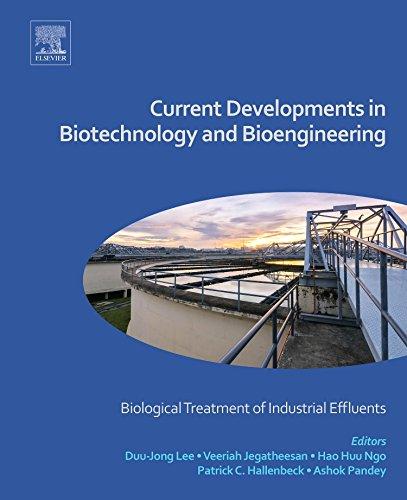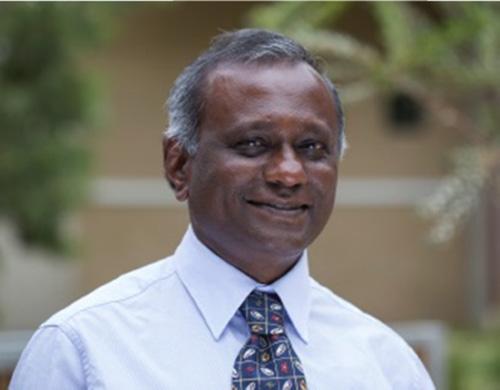https://ebookmass.com/product/current-developments-inbiotechnology-and-bioengineering-biological-treatment-of-
Edition Carlo Di Lauro
https://ebookmass.com/product/rotational-structure-in-molecularinfrared-spectra-2nd-edition-carlo-di-lauro/
ebookmass.com
ListofContributors
A.Asghar UniversityofMalaya,KualaLumpur,Malaysia
N.Balagurusamy UniversidadAutónomadeCoahuila,Torreón,Coahuila,Mexico
E.R.Bandala UniversidaddeLasAméricasPuebla,Cholula,Puebla,Mexico
A.Buthiyappan UniversityofMalaya,KualaLumpur,Malaysia
P.Champagne Queen’sUniversity,Kingston,ON,Canada
C.-C.Chen ChungChouUniversityofScienceandTechnology,Changhwa,Taiwan
W.M.A.W.Daud UniversityofMalaya,KualaLumpur,Malaysia
A.Daverey DoonUniversity,Dehradun,India
C.Fu CentreforWaterResearch,NationalUniversityofSingapore,Singapore
V.Gadhamshetty SouthDakotaSchoolofMinesandTechnology,RapidCity,SD, UnitedStates
M.GarcíaLozano UniversidadAutónomadeCoahuila,Torreón,Coahuila,Mexico
B.D.Gebrewold UNESCO-IHEInstituteforWaterEducation,Delft,TheNetherlands
B.Giri UniversityofHawai’iatManoa,Honolulu,HI,UnitedStates
J.-D.Gu TheUniversityofHongKong,HongKong,China
W.Guo UniversityofTechnologySydney,Sydney,NSW,Australia
F.I.Hai UniversityofWollongong,Wollongong,NSW,Australia
B.S.Herath WesternSydneyUniversity,Penrith,NSW,Australia
M.Howell Queen’sUniversity,Kingston,ON,Canada
S.Hu AdvancedWaterManagementCentre,TheUniversityofQueensland,Brisbane, Australia
G.Kastl WesternSydneyUniversity,Penrith,NSW,Australia
S.K.Khanal UniversityofHawai’iatManoa,Honolulu,HI,UnitedStates
M.Kumar IndianInstituteofTechnologyMadras,Chennai,India
C.-H.Lay FengChiaUniversity,Taichung,Taiwan
D.-J.Lee NationalTaiwanUniversity,Taipei,Taiwan;NationalTaiwanUniversityof ScienceandTechnology,Taipei,Taiwan
C.-Y.Lin FengChiaUniversity,Taichung,Taiwan
J.-G.Lin NationalChiaoTungUniversity,Hsinchu,Taiwan
J.C.Liu NationalTaiwanUniversityofScienceandTechnology,Taipei,Taiwan
L.Liu Queen’sUniversity,Kingston,ON,Canada
S.L.Low CentreforWaterResearch,NationalUniversityofSingapore,Singapore
Y.Lu AdvancedWaterManagementCentre,TheUniversityofQueensland,Brisbane, Australia
L.E.MontañezHernandez UniversidadAutónomadeCoahuila,Torreón, Coahuila,Mexico
P.Mullai AnnamalaiUniversity,TamilNadu,India
H.Y.Ng CentreforWaterResearch,NationalUniversityofSingapore,Singapore
K.K.Ng CentreforWaterResearch,NationalUniversityofSingapore,Singapore
L.D.Nghiem UniversityofWollongong,Wollongong,NSW,Australia
H.H.Ngo UniversityofTechnologySydney,Sydney,NSW,Australia
S.Nitayavardhana ChiangMaiUniversity,ChiangMai,Thailand
R.OropezaNavarro UniversidadNacionalAutnomadeMéxico,Cuernavaca, Morelos,Mexico
K.Pakshirajan IndianInstituteofTechnologyGuwahati,Guwahati,Assam,India
Y.PeñaGarcia UniversidadAutónomadeCoahuila,Torreón,Coahuila,Mexico
W.E.Price UniversityofWollongong,Wollongong,NSW,Australia
G.Qiu NationalUniversityofSingapore,Singapore
A.A.A.Raman UniversityofMalaya,KualaLumpur,Malaysia
M.E.RaynalGutierrez UniversidaddeLasAméricasPuebla,Cholula,Puebla, Mexico
E.R.Rene UNESCO-IHEInstituteforWaterEducation,Delft,TheNetherlands
J.L.Sanchez-Salas UniversidaddeLasAméricasPuebla,Cholula,Puebla,Mexico
A.Sathasivan WesternSydneyUniversity,Penrith,NSW,Australia
S.T.M.L.D.Senevirathna CharlesSturtUniversity,Bathurst,NSW,Australia
X.Shi CentreforWaterResearch,NationalUniversityofSingapore,Singapore
K.-Y.Show ZhejiangJunengCo.Ltd.,Tongxiang,China
Y.Song ChineseResearchAcademyofEnvironmentalSciences,Beijing,PRChina
D.S.SrinivasaRaghavan NationalUniversityofSingapore,Singapore
S.Su CommonwealthScientificandIndustrialResearchOrganisation(CSIRO), Pullenvale,Queensland,Australia
M.M.TejasNamboodiri IndianInstituteofTechnologyGuwahati,Guwahati, Assam,India
R.Thiruvenkatachari CommonwealthScientificandIndustrialResearch Organisation(CSIRO),Pullenvale,Queensland,Australia
Y.-P.Ting NationalUniversityofSingapore,Singapore
T.P.TramVo UniversityofTechnologySydney,Sydney,NSW,Australia
J.Virkutyte EnvironmentalConsultant,Cincinnati,OH,UnitedStates
S.Vishali SRMUniversity,TamilNadu,India
R.Wickham UniversityofWollongong,Wollongong,NSW,Australia
M.K.Yogeswari VivekanandhaCollegeofArtsandSciencesforWomen, TamilNadu,India
AbouttheEditors
Duu-JongLee
ProfessorDuu-JongLeeiscurrentlyaLife-TimeSpecially AppointedProfessorofNationalTaiwanUniversity(NTU) andchairprofessorandvicepresidentoftheNational TaiwanUniversityofScienceandTechnology.Heobtained hisbachelor(1984)andPh.D.(1989)degreesbothatthe ChemicalEngineeringDepartment,NTU.ProfessorLeehas astrongresearchinterestintheareasofindustrialwastewatertreatment,biomasstoenergy,andenvironmental management,especiallyinmicroscaletransportandreactionprocessesinbiomassmatrix.Since1989,hehas completedseveralprojectssuccessfullyanddeveloped variousprocesseswithfull-scaleapplications.Hisresearch hascreditedhimwithmorethan1000publicationsand communications.ThecitationsinSCOPUSonProfessorLee’sworkhaveexceeded 14,000withanhindexof57.ProfessorLeeistherecipientofmanynationalandinternationalawardsandfellowships.HewasalsothepresidentoftheTaiwanInstituteof ChemicalEngineers,with3500membersinTaiwanandoverseas.
VeeriahJegatheesan
ProfessorVeeriahJegatheesan(Jega)receivedhisPh.D.in WaterEngineeringandhas20yearsofexperienceinwater research.HehasworkedasaconsultantatSydneyWater Corporationandhascollaboratedwithseveralotherwater authoritiesinAustralia.Currentlyheisattachedtothe SchoolofEngineeringattheRoyalMelbourneInstituteof Technology,Australia.Hisresearchfocusesonsustainable catchmentmanagementthroughtheapplicationofnovel treatmentprocesses,resourcerecovery,andmathematical modeling.Hehascoeditedfourbooksandwasamanagingguesteditorfor15special issuesinpeer-reviewedjournalsandhaspublished90journalarticles.HeistheChief Editorofabookseriesentitled AppliedEnvironmentalScienceandEngineeringfora SustainableFuture publishedbySpringer.Heisanassociateeditorforthe Journalof WaterSustainability andaneditorialboardmemberofanumberofjournals.Hiscore
Award,GovernmentofCuba;UNESCOProfessor;RamanResearchFellowshipAward, CSIR;GBF,Germany,andCNRS,Francefellowships;YoungScientistAward;andothers. HewaschairmanoftheInternationalSocietyofFood,AgricultureandEnvironment, Finland(Food&Health)during2003 04.HeistheFounderPresidentoftheBiotech ResearchSociety,India(www.brsi.in);InternationalCoordinatoroftheInternational ForumonIndustrialBioprocesses,France(www.ifibiop.org);chairmanofthe InternationalSocietyforEnergy,Environment&Sustainability(www.isees.org);andvice presidentoftheAllIndiaBiotechAssociation(www.aibaonline.com).ProfessorPandey iseditor-in-chiefof BioresourceTechnology, HonoraryExecutiveAdvisorofthe Journalof WaterSustainability and JournalofEnergyandEnvironmentalSustainability, subject editorofthe ProceedingsoftheNationalAcademyofSciences(India), andeditorialboard memberofseveralinternationalandIndianjournals,andalsoamemberofseveral nationalandinternationalcommittees.
AerobicTreatmentofEffluents FromTextileIndustry
P.Mullai1, *,M.K.Yogeswari2,S.Vishali 3 , M.M.TejasNamboodiri4,B.D.Gebrewold5,E.R.Rene5, K.Pakshirajan4
1 ANNAMALAIUNIVERSITY,TAMILNADU,INDIA; 2 VIVEKANANDHACOLLEGEOFARTSAND SCIENCESFORWOMEN,TAMILNADU,INDIA; 3 SRMUNIVERSITY,TAMILNADU,INDIA; 4 INDIANINSTITUTEOFTECHNOLOGY GUWAHATI,GUWAHATI,ASSAM,INDIA; 5 UNESCO-IHE INSTITUTEFORWATEREDUCATION,DELFT,THENETHERLANDS
1.1Introduction
Rapidindustrializationofthedevelopingworldhascontributedtounsustainable pollutionlevels [1,2].Inthepastfewdecades,anincreaseinthedemandfortextile productshasledtoasteepriseinwaterpollution [3,4].Textileeffluentistaggedasthe mostpollutingasitconsumesalargequantityofwaterandchemicalsfortheprocessing offabricsthroughouttheworldandinturntheseindustriesgeneratepollutionbydiscardingthewastes [5 7].Similarly,increasingfinancialconstraintspavethewayfor dischargeofuntreatedeffluentsintotheenvironment [8].Globally,280,000tonsofdyeis dischargedintotextileindustrywastewatereveryyear [9,10].
Althoughtheuseoftextiledyesisimportant,itcausesseriousenvironmentalproblems.Textilewastewatercontainsamixtureofinorganicandorganiccompounds,which arecomplexinnature [11].AccordingtoarecentreportfromChina,eachyearabout 70billiontonsofwastewaterfromthetextileanddyeingindustryisgeneratedandneeds adequatetreatmentbeforeultimatedischargeintotheenvironment.Surprisingly,about 10 15%ofthedyesusedinthedyeingprocessdonotfixwiththetextilefibersand, therefore,theyarecarriedbythewastewaterintheiroriginalformsandconcentrations [12].Themajorpollutantspresentintextilewastewaterarerecalcitrantorganics,residues ofreactivedyes,aerosols,levelingagents,acids,alkalis,amines,heavymetals,chlorophenol,chlorine,halogencarriers,formaldehyde,biocides,andsofteners [13 16].
Table1.1 presentsthemajorpollutantsandchemicaltypespresentintextilewastewater andtheirmainprocessesoforigin.Accordingly,thevariousunitprocesses,suchassizing, desizing,bleaching,mercerizing,dyeing,andprinting,generatehighlevelsofbiochemical
*CorrespondingAuthor.
FIGURE1.1 Representativechemicalstructuresofvariousdyesusedinthetextileindustry.(A)Natural,(B)basic, (C)direct,(D)mordant,(E)vat,(F)reactive,(G)disperse,and(H)sulfur.
1.2.4VatDyes
Vatdyesarenaturallywaterinsoluble.Tomakethemsolubleandtofixwithfabrics,they arereducedwithalkalisalts.Furtheroxidationtendstorestoretheirinsolublenature. Withouttheadditionofmordant,thesedyesareusedtocolorcotton,linen,andrayon, whereaswiththeadditionofmordant,theyareusedtocolorwool,nylon,polyesters,and acrylics.
1.2.5ReactiveDyes
Reactivedyeswereinitiallyusedforcellulose-basedfibers.Occasionally,heattreatment isrequiredforthesereactivedyesforgeneratingvariousshades.Oncethedyeingprocess iscompleted,thefabricsarewashedusingsoaptotakeawayeveryunfixeddye. Applicationsincludedyeingwoolmaterials,silkfibers,andnylonblends.
1.2.6DisperseDyes
Dispersedyesareinsolubleinwaterandmarketedintheformofpowderorpaste. Traditionally,dispersedyeswerepreparedtodyecellulosematerials.Thesedays,they areemployedtodyeacrylicandnylonfibers.
1.2.7SulfurDyes
Theinsolublenatureofsulfurdyesismadesolublebytreatingthemwithsodaand sodiumsalts.Usually,treatmentathightemperatureandtheadditionofsaltsare requiredtoimpartcolortothefabrics.Oncethedyeingprocessiscompleted,the unfixedsaltsanddyesareremoved.Thesedyesaremainlyemployedtoimpartcolorto cottonandlinenmaterials.
1.3MainProcessesInvolvedintheTextileIndustry
Thefourmainstagesoftextileprocessinginvolveyarnproduction,fabricproduction, wetprocessing,andgarmentmanufacturing [31].Yarnfabricationistheprocessin whichtheconversionofrawfiberintoyarnorthreadoccurs.Thesecondstep,fabric production,involvesweaving,knitting,andtufting.Thenextstepiswetprocessing, whichincludespretreatment,dyeing,printing,andfinishing.Inthisprocess,thesizing elementsaredetachedfromthegrayfabricbytreatingthemwithacidsorenzymes.The scouringprocessisdonetoremoveimpuritiessuchasoils,waxymaterials,andfatty acids,amongothers,seeninthefabric,underalkalineconditions,highpressure,and hightemperature.Bleachingisperformedtowhitenthefabricsandyarnsusing bleachingagentslikehypochloriteandhydrogenperoxide.Duringthemercerizing process,thefabricsoryarnsaretreatedwithasodiumhydroxide(cold)solution,which increasesthetensilepotency,gleam,anddyeuptakebymakingthefabricswell.The dyeingprocessiscarriedouttogiveafinishedtexturetothefabricbydiffusion.
1.4AerobicProcessestoTreatTextileIndustryEf fluents
Aerobictreatmentsystemsarehigh-rateoxidizersofsolubleorganicandnitrogenous compounds.Commerciallyavailableaerobictreatmentreactorspromotetheremovalof color,suspendedsolids,andpathogensandthereductionofCOD,BOD,andother
1. Temperature
2. pH
3. Food-to-microorganism(F/M)ratio
4. Hydraulicretentiontime(HRT)
5. Nutrientavailability
6. Aeration/oxygentransferrate
7. Hydraulicandorganicloadingrates
Temperature:Therateofbiologicaloxidationisafunctionoftemperature.Various microbialspecieshaveoptimaltemperaturesforsurvivalandcellsynthesis:psychrophilic(12 18 C),mesophilic(25 40 C),andthermophilic(55 65 C).
pH:TheinfluentpHhasasignificanteffectontextileindustrywastewatertreatment [37].Byaddingasuitableacid/base,itispossibletotreattextilewastewatersoverawide pHrange.However,theoptimumpHformicrobialgrowthisbetween6.0and7.5.Itis commonlyviewedthat,ataslightlyalkalinepH,thebacterialgrowthisprime.Similarly, ithasalsobeenshownthatthealgalandfungalgrowthisstimulatedinslightlyacidic wastewater.TheresponsetopHislargelyduetochangesintheacidicenvironment causedbyenzymaticactivity.
F/Mratio:TheF/Mratioindicatesthecorrespondencebetweentheamountofsubstrate,bioavailableorganiccompounds,chargedintotheaerationchambereachdayand theamountofmicroorganismsaccommodatedwithintheaerationchamber.The physicochemicalpropertiesofthesubstrate(food)aswellasthetypeofbiocatalyst, whetherpureormixed,stronglydeterminetheoverallefficiencyofthetreatmentprocess.TheF/MratioisexplainedintermsofmassofBODpermassofmicrobesinthe treatmentunitperdayofoperation.Thislife-sustainingparameterhasasignificant influenceonthemicrobialpopulationanditsactivity.Asuddendisturbanceinthe organicloadingrate(OLR)affectsthemicrobialpopulation.
HRT:Theaveragetimespentbythesolublecompoundpresentinwastewaterwithin thebioreactorisknownastheHRT.Itisaratiobetweenthevolumeoftheaerationtank andtheinfluentflowrate.Textilewastewatershavebeensuccessfullytreatedusingan activatedsludgeprocessatHRTsvaryingbetween18and36h [38,39].
Nutrientavailability:Nutrients,suchasNandP,enhancethegrowthofmicroorganismsintheaerobicreactor,whichincreasesthetreatmentefficiency.Nutrienttype dependsonthenatureofthemicroorganismadopted,namely,bacteria,fungi,yeasts, etc.Theoptimumnutrientrequirementforthemaximumdecolorizationoftextile effluentisthemajorconcern.Theeffectsofthepresenceandabsenceofnutrientson textileindustrywastewatertreatmentusing Trametesversicolor werereportedbyMullai andVishali [40].
Aeration/oxygentransferrate:Aerationistheprocessbywhichairismixedwithor circulatedthroughthetextilewastewater.Thetheoreticalrequirementofoxygenforthe aerationprocessdependsuponthetotalmicroorganismspresentforoxidizingthewaste. ItcanbeevaluatedbasedonBODcontent,ammonia-nitrogenoxidized,oxidized
nitrogendenitrified,andthedissolvedoxygen(DO)requiredformicrobialgrowth.Large quantitiesofoxygenmustbeprovidedtomaintainaerobicconditions [33].Inaconventionalwastewatertreatmentplant,anaerobictreatmentsystemisdesignedto maximizethecontactinterface(surfacearea)betweenthegasandtheliquidphases,to escalatetheopportunityforoxygentransfer.
Hydraulicandorganicloadingrates:Bothhydraulicandorganicloadingratesform thebasisforanaerobicbioreactorspecification [33].TheOLRindicatestheavailabilityof thefood(incomingcolloidalandsolubleBOD)comparedtotheavailabilityofthemicrobialpopulationtoassimilatethefood(F/Mratio).Thequalityofthetreatedtextile effluentwillbehighiftherearemoremicrobesthanfood,andthereverseisalso possible.
1.5MechanismofAerobicTreatmentofTextileEf
fluent
Biologicaldegradationorbioremediationisthekeyareaofinterestfortreatmentof variouspollutantsandeffluentwastes.Variousmicrobialstrainsareselectedand acclimatizedtogrowandmetabolizeinthepresenceoftoxiceffluentssuchthattheycan transformthepollutantstolessharmfulby-products.Apartfrombeingenvironmentally friendlyandcost-effective,theydonotconsumelargevolumesofwatercomparedwith variousphysicochemicalmethodsinvolvedintreatingtheseeffluents.Majormechanismsbywhichtextilewastewatercanbetreatedusingmicroorganismcanbeclassified intobiosorptionandenzymaticdegradation.Awidevarietyofmicroorganisms,both fungiandbacteria,havebeenisolatedwiththeabilitytodegradedifferentclassesofdyes commonlyusedinthetextileindustry.Someoftheseinclude Aspergillus, Bacillus, Enterococcus, Pichia, Pseudomonas, Shewanella,and Staphylococcus [41 45].
1.5.1Biosorption
Microorganismsareknowntoeffectivelyremovesolubletoxicorganicandinorganic substancesbyapassiveprocess,commonlyknownasbiosorption.Biosorptiontakes placebecauseofthepresenceofvariousfunctionalgroupsonthemicrobialsurface. Biosorptionleadstosequestrationofdyesormetalsfromsolutionby(1)complexation, (2)chelation,(3)precipitation,and(4)ionicinteractions.Azodyes,whicharemajor contributorstothecolorofthetextileeffluent,areremovedbybiosorptionparticularly byfungiandyeasts.Thecellwallofamicrobeisconsideredtobetheprimarysiteof biosorption.Inthecaseofbiosorptionbyyeasts,peptidoglycansorproteinspresenton thecellwalloractivegroupssuchaspolysaccharides,lipids,andaminoacids [46 48] playavitalrole.BiosorptiondependsuponthesolutionpH,temperature,initialdye concentration,anddosage. Saccharomycescerevisiae showedmaximumsorptionatpH 6.0 [49].Adeadbiomassof Aspergillusniger hasbeeneffectivelyutilizedasabiosorbent forwhichtheoptimumpHwasfoundtobe5.0 [50].Agriculturalresidueshavealsobeen usedasbiosorbentsfortreatingwastewater.Wheatstraw [51],corncob,andbarleyhusk
electronfromthedyeandtransferringittoO2 (viamediators),andsubsequentlythedye breaksdown.Laccasescanactuponawiderangeofsubstratesand,therefore,canbe usedforthetreatmentofwastewatersthatcontainvariousazodyes [64 66]
1.5.2.3Peroxidases
Ligninperoxidasesareheme-containingoxidoreductasesandareknownforthedegradationofvariousaromaticcompoundslikephenylsandsyntheticdyes [59].Chivukula andRenganathan [67] proposedamechanismofazodyedegradationbyligninperoxidases,inwhicharadicalisproducedatthecarboninvolvedintheazolinkage( N]N ) owingtotheoxidationofthephenolgroupbyligninperoxidase.Thisisfollowedbythe attackofawatermoleculeonthephenolgroup,releasingphenyldiazine,whichis subsequentlyoxidizedtogenerateN2 [68].Ligninperoxidasesfromthewhiterotfungus Phanerochaetechrysosporium arereportedtodegradeavarietyofazodyes [69].
1.6BiocatalystsforTextileWastewaterTreatment
1.6.1Algae
Algaehavethreedifferentmechanismsfordecolorizationorassimilationofthecolored compounds.Thechromophoresareutilized(1)fortheproductionofalgalbiomass, carbondioxide,andwater;(2)fortransformationofthecoloredcompoundstouncoloredones;and(3)foradsorptionofthedyeonthealgalbiomass. Chlorella and Oscillatoria havebeenreportedtodegradeazodyestoaromaticaminestosimple compoundsandsubsequentlytoCO2 [70].Theyhavebeenshowntodegradeover30 differentdyes [71].Severalresearchershavereportedthepotentialofvariousalgalstrains totreattextilewastewaterowingtotheirabilitytodegradetheazobonds [72,73].Algae canbegrownsymbioticallywithaerobicmicrobessuchthatthealgaewouldprovideO2 totheseaerobes,whichcanutilizethearomaticaminesreleasedbythedegradationof thechromophoresordyes [74]. Scenedesmusbijugatus showed68%decolorizationofazo dyesafter6daysofincubation [75].Khataeeetal. [76] reported83.5%decolorizationof BasicRed46byagreenmacroalgabelongingto Enteromorpha sp.within5hofbatch incubationat25 C.
1.6.2Bacteria
Bacteriahavebeenpreferredoverfungiforthetreatmentoftextilewastewatersasthe ratesofdecolorizationandmineralizationofthedyespresentintheeffluentsarehigher. Inadditiontothismajoradvantage,theuseofbacteriafortreatmentleadstolesssludge generationandtheprocessiscost-effectiveaswell.Speciesbelongingtothegenera Pseudomonas, Bacillus, Aeromonas,and Proteus aresomeoftheextensivelystudied bacteriaforthedegradationofdyesandothertoxiceffluents [77,78] Pseudomonas aeruginosa hasbeenreportedtodecolorizeacommercialtextiledye,NavitanFastBlue
SSR,underaerobicconditions [79].Kolekaretal. [80] reportedadecreaseinCODand colorofamixtureofdyesbyusing Shewanella strainKMK6.ReductionsinCODand colorby66.7%and96.9%,respectively,wereobservedwhen Bacillus MK-8strainwas usedintheformofgranules [81]. Table1.3 presentsthebacterialdegradationofvarious dyesunderdifferentprocessconditions.
Bacterialdecolorizationbypureculture sisrapid,butleadstotheformationof toxicintermediateslikearomaticamines [82].Mixedcultureshavebeenshowntobe moreefficientinthedegradationofwastew atersanddyesowingtothesynergistic metabolismofthemicrobespresentthatcanutilizetoxicintermediatestoform nontoxicby-products [83].Amicrobialconsortiumof Bacillus , Sphingobacterium,and Pseudomonas wasreportedtodecolorizetextilewastewaterrapidlycomparedtothe purecultures [84]
1.6.3Fungi
Fungihavebeenfoundtobeveryeffectiveinthedecolorizationanddegradationof textilewastewatersbecauseofthepresenceofvariousnonselectiveenzymesystems, whichcanactuponawiderangeofsubstrates,enablingthemtosurviveunderharsh conditions [85].Thesecretionoflaccase,ligninperoxidases,andmanganeseperoxidase helpsthemindegradingtherecalcitrantcomponentsofthewastewater [86].Whiterot fungi,inparticular,havebeenfoundveryeffectiveinthedegradationofvariousdyesand otherxenobiotics [87].Amaraletal. [88] andAssadietal. [89] reported92%and98%, respectively,decolorizationofarawtextileeffluentby T.versicolor.Theapplicationof whiterotfungiintheeffluenttreatmentislimitedbythelonggrowthcycle,whichin turnrequiresprolongedhydraulicretentiontimes.Theneedfornitrogen-limitingconditionsandpreservingthedominanceoffungalculturesinthereactorsystemisthe majorchallengethatpreventstheuseoffungiforfull-scaleapplications [58,90].Amixed fungalcultureof Pleurotusostreatus and Coriolusversicolor reducedtheCODandBOD ofwastewateralongwithachievingitsdecolorization [91]. Table1.4 liststhevarious fungalstrainsthathavebeenappliedfortreatmentoftextilewastewateranddegradation ofvariousdyes.
1.6.4Yeasts
Interestintextilewastewatertreatmentusingyeastsisduetotheabilityoftheyeast biomasstoabsorbandaccumulatetoxicchromophoresaswellastodegradetheminto simplercompounds.Deadbiomassofyeasthasbeenutilizedasabiosorbentforthe biosorptionofdyesasdiscussedinaprevioussection.Yeastsalsopossessanenzyme systemthatcandegradedyespresentinthetextilewastewater.Peroxidases,reductases, andlaccasesaresomeoftheenzymesystemspresentinyeastthattakepartinthedye degradationprocess. Candidakrusei, Trichosporonbeigelii, Galactomycesgeotrichum, S.cerevisiae,etc.,havebeenwellreportedforthebiodegradationofdyes [92 94].






